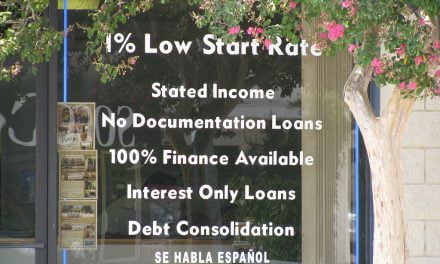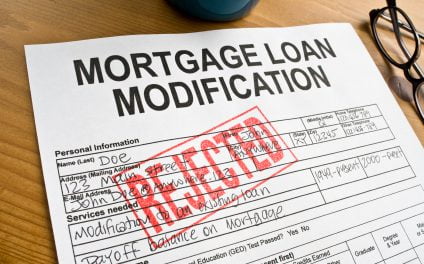Mortgage credit is increasingly more accessible to your buyers, according to the Mortgage Bankers Association (MBA’s) Mortgage Credit Availability Index. Mortgage availability was at its highest in November 2016 since the 2008 recession.
All four types of mortgages the MBA tracks continued this accessibility trend in November, including access to:
- government mortgages — Federal Housing Administration (FHA)-insured, Veterans Administration (VA)-guaranteed and U.S. Department of Agriculture (USDA) mortgages — which rose in availability 1.8% over the previous month; and
- conventional mortgages — all non-government mortgages — which rose in availability 1.5% over the previous month, including:
- conforming mortgages — non-government mortgages which fall under local conforming mortgage limits — which rose in availability 2.2% over the previous month; and
- jumbo mortgages, which rose in availability 0.8% over the previous month.
While access to mortgages continues to improve following the meager years after the housing crash, when viewed from a long-term perspective, mortgage access is still fairly tight when compared to the Millennium Boom years. For comparison, November 2016’s mortgage credit availability index figure was 174. This is down from the index figure of nearly 900 experienced in 2006.
Further, increased mortgage access hasn’t rippled out to all buyers. The ability to obtain mortgage financing has certainly improved for many, but has not been equally felt by all types of applicants.
Still more difficult for minorities to qualify
A recent Zillow report finds that conventional mortgage denials dropped from 12.4% in 2013 to 10.4% in 2015. Further, FHA-insured mortgage denials dropped from 17.4% in 2013 to 13.9% in 2015. However, when broken down by race, certain ethnic minorities are being denied at a much higher rate than the national average.
In 2015, applicants for a conventional mortgage were denied at a rate of:
- 22.4% for Black buyers;
- 17.3% for Hispanic buyers;
- 11.1% for Asian buyers; and
- 8.7% for White buyers.
A similar pattern is seen in 2015 FHA-insured mortgage denials at:
- 19.6% for Black buyers;
- 16.4% for Asian buyers;
- 15.5% for Hispanic buyers; and
- 11.4% for White buyers.
This is particularly troubling for California’s housing market, since we have a large number of non-White residents (39% Hispanic, 15% Asian and 7% Black).
Since the mortgage denial rate is higher for minorities — twice as high for Hispanic buyers and more than twice as high for Black buyers — California is likely to see a disproportionate number of mortgage denials when compared to the rest of the country.
As evidence, consider California’s low homeownership rate, which is just above 53% as of the third quarter (Q3) of 2016, according to the U.S. Census. This is the second-lowest rate of homeownership in the nation and far below the 63.5% average U.S. homeownership rate. (Other reasons for California’s low homeownership rate include its highly mobile population and more pessimistic attitude toward the “American Dream” of homeownership.)
As further evidence, California communities with the highest minority populations also see the lowest homeownership rates.
Why are mortgages denied at higher rates for minorities? Is discriminatory lending (read: redlining) to blame?
An agent’s solution
Real estate agents and brokers may be tempted to shrug and continue business as usual, since mortgage access is all in the hands of the lender.
However, consider these concrete steps you can take to ensure your clients have an equal chance at sustainable homeownership:
- Be vigilant for predatory lending. Perhaps the only thing worse than being denied a mortgage when you rightfully qualify is the opposite. Thousands of minority applicants were targeted for volatile mortgages premised on adjustable interest rates during the Millennium Boom (see the 2012 Bank of America/Countrywide lawsuit). Many of these borrowers were ultimately unable to pay when the interest rates adjusted and consequently lost their homes. Agents can combat predatory lending by ensuring their clients understand all aspects of the mortgage and encouraging them to seek guidance from housing counselors or simply from the Consumer Financial Protection Bureau’s (CFPB’s) website.
- When a mortgage application is denied, assist your buyer to seek out the reason. Is it due to the client’s high debt-to-income (DTI) ratio? Encourage your buyer to pay down their debts and apply again in a few months or a year. Check in with these clients regularly to encourage them in meeting their goals. The cultivation of an individual client is no different than the cultivation of a neighborhood using a persuasive and steady FARMing campaign.
- Finally, when there appears to be no good reason for the mortgage denial, inform your buyer client they have a couple of options. First, they can simply seek approval elsewhere — lenders are designed to lend. Thus, the buyer can find another lender who will be able to provide financing, albeit on different terms. Alternatively, if the buyer perceives they were the victim of discriminatory practices, they can report the suspicious practices to the U.S. Department of Housing and Urban Development (HUD) or the CFPB.














